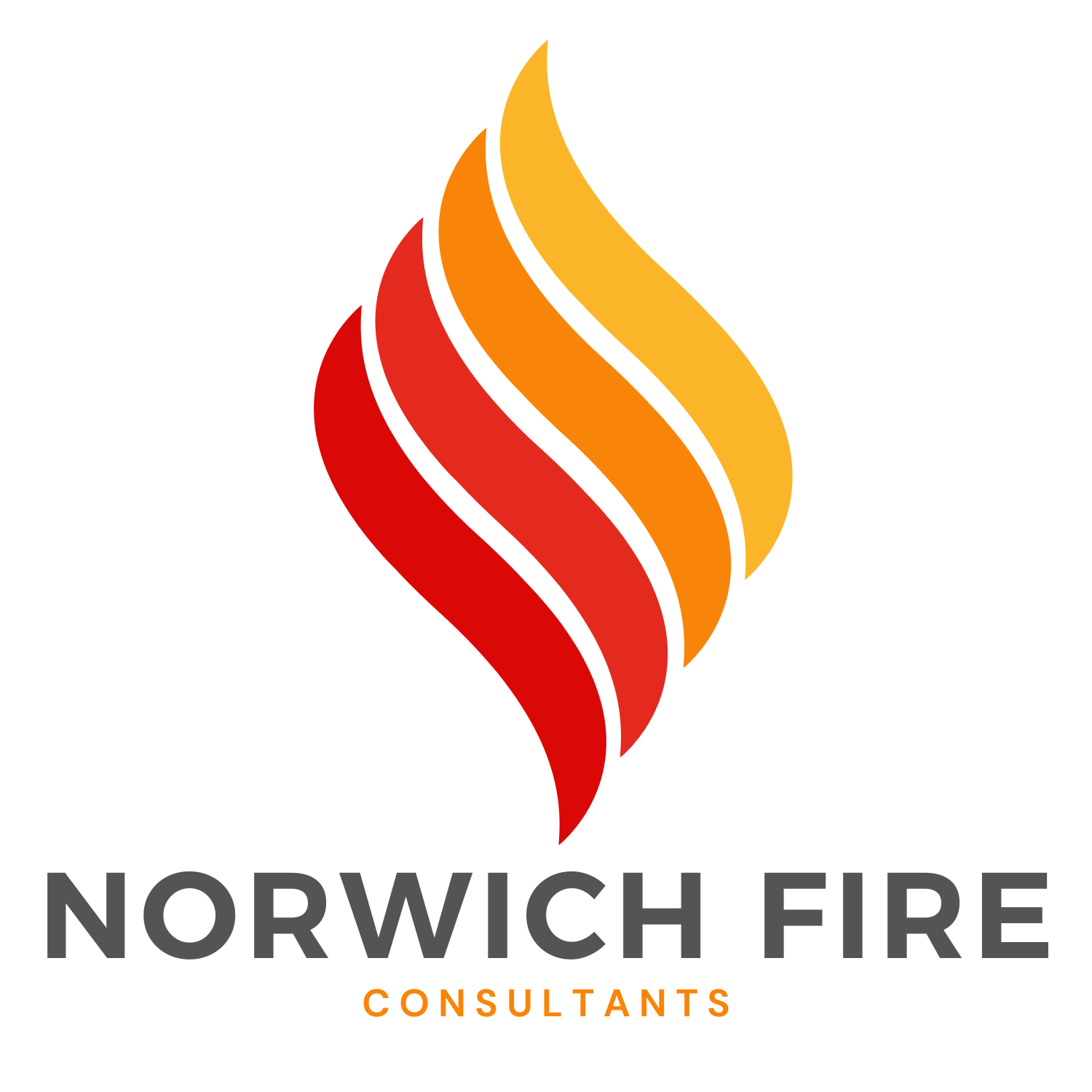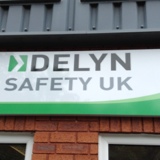Information
-
Audit Title
-
Document No.
-
Client / Site
-
Conducted on
-
Prepared by
-
Location
-
Personnel
Part 1: GENERAL INFORMATION
The responsible person for fire safety
-
Name of the responsible person
-
Contact details of responsible person
1 The Building
-
Number of Floors
- 1
- 2
- 3
- 4
- 5
- 6
- 7
- 8
- 9
- 10
-
Floor area: (m2 per floor)
-
Floor area: (m2 total)
-
Brief details of construction:
-
Occupancy type:
2 The occupants
-
Maximum number of occupants:
-
Maximum number of occupants at any given time:
-
Maximum number of members of the public at one time:
3 Occupants at special risk
-
Are children employed at the premises?
-
Are there sleeping occupants?
-
Are there disabled occupants?
-
Are there occupants in remote areas?
-
Are there lone workers?
4 Previous Fire loss experience
-
Is there any previous history of fire loss in the premises (if yes give details)
5 Other relevant background
-
Are there any residential properties in or attached to the building
-
Is there a prohibition notice in force? (if yes give date of issue)
-
Is there an alteration notice in force? (if yes give date of issue)
-
Is there an enforcement notice in force? (if yes give date of issue and date of when work is to be completed by)
Part 2: FIRE HAZARDS AND ELIMINATION OR CONTROL
6 Electrical sources of ignition
-
Are reasonable measures taken to prevent fires of electrical origin (enough sockets, closed cabinets, ventilation for motors, prevention of dust build up)?
-
Is the fixed wiring installation periodically tested and inspected (between 3 and 5 years depending on building type)?
-
Are portable appliances tested/inspected?
-
Is there a suitable limitation on the use of trailing leads and adapters?
7 Smoking
-
Are reasonable measures taken to prevent fires as a result of smoking?
-
Is smoking prohibited to appropriate outdoor areas?
-
Are there suitable arrangements made for those who wish to smoke (bins, shelter away from building overhang, windows)?
-
Is there absence of any evidence of breaches of smoking policy?
-
Are appropriate smoking prohibition notices displayed around the building?
8 Arson
-
Are there reasonable security measures to prevent unauthorised access?
-
Is there sufficient control of unnecessary fire load in close proximity to the building or available for ignition by outsiders?
9 Portable heaters and heating installation
-
Is the use of portable heaters avoided as far as reasonably practicable?
-
If portable heaters are used are suitable measures taken to minimise the risk of ignition of combustible materials?
-
Are fixed heating installations subject to regular maintenance?
10 Cooking facilities
-
Are reasonable measures taken to prevent cooking fires (storage of oils etc away from heat sources)?
-
Are filters changed and ductwork cleaned regularly?
-
Are suitable extinguishers and / or fire blankets available?
11 Lightning
-
Does the building have lightning protection system if required? (if yes has it been tested and are records of testing kept)
12 Other significant ignition sources that warrant consideration
-
List other ignition sources:
13 Segregation Measures and Waste Management
-
Is the standard of housekeeping adequate?
-
Are combustible materials separated from ignition sources?
-
Is the unnecessary accumulation of combustibles and waste avoided (escape routes and stair wells)?
-
Is there appropriate storage of hazardous materials?
-
Are combustible materials (paper, wood, cardboard, plastics) stored appropriately?
14 External influences (Hazards introduced by contractors and building works)
-
Is there sufficient control over works by contractors (e.g. Permits to work & hot works permits)?
-
Are there arrangements for the safe storage of gas bottles and others hazardous materials
-
Are fire safety conditions and instructions communicated to contractors?
15 Dangerous Substances
-
Are dangerous substances present on the premises?
-
Has the risk to relevant persons been adequately eliminated or reduced?
Part 3: FIRE PROTECTION MEASURES
16 Means of escape
-
Is the building provided with adequate means of escape in case of fire (protected corridors minimum 30 minutes protection?
-
Are there sufficient exits? (minimum 2 directions of travel, 2.5 minutes to reach fresh air)
-
Are exits easily and immediately openable where necessary?
-
Do fire exits open in the direction of travel where necessary?
-
Have sliding or revolving doors been avoided as fire exits?
-
Are there adequate means of securing exits?
-
Are there reasonable distances of travel where there is a single direction of travel? (7 to 26m max)
-
Are there reasonable distances of travel where there are alternative means of escape? (14 to 65m max)
-
Are escape routes adequately protected? (fire doors, no roof voids, gaps in walls)
-
Are there suitable fire precautions for all inner rooms?
-
Are escape routes unobstructed?
-
Are there suitable means of escape for disabled occupants?
17 Measures to limit fire spread and development.
-
Is there a sufficient standard of compartmentation and sub-compartmentation?
-
Are linings that promote fire spread avoided as far as reasonably practicable (wallpapers in hot zones)?
-
Are their intrumescent strips fitted to fire doors/frames to limit smoke spread?
-
Are gaps between fire doors between 2mm and 4mm (ideally 3mm)?
-
Do fire door display signage to keep shut or operate automatically?
-
Are all walls and ceilings intact (no voids, pipe or cable holes)?
18 Escape lighting
-
Is Emergency lighting provided for escape (guidance 1lux along centre line of corridor, typically 2.5 to 4m apart, within 2m of changes of direction or level)?
19 Fire safety signs and notices
-
Are fire safety / evacuation signs positioned at reasonable locations (2.2m when suspended above head height, 1.7m on escape route walls?
-
Are evacuation signs positioned at exit points and intervals / changes of direction?
20 Means of detecting and giving warning in the event of fire
-
Is a manual way of raising the alarm?
-
Is automatic fire detection and alarm system provided?
-
Is there remote transmission of alarm signals to emergency services?
21 Manual fire extinguishing appliances
-
Is there suitable and sufficient provision of portable fire extinguishers?
-
Are extinguishers appropriate to the types of fire hazard (co2, water, foam)
-
Are hose reels provided?
-
Are fire blankets provided?
-
Is there an automatic extinguishing system?
22 Relevant automatic fire extinguishing systems
-
Type of system:
-
Comments and observations:
23 Facilities, equipment and devices for the protection of Fire-Fighters
-
Types of facilities:
-
Comments and observations:
Part 4: MANAGEMENT OF FIRE SAFETY
24 Procedures and arrangements
-
Person responsible for fire safety:
-
Are there competent persons available to assist in implementing fire safety arrangements?
-
Are appropriate fire procedures in place? (including arrangements for calling the fire service)
-
Fire Emergency Plan in place and details recorded?
-
Does the plan take account of other Fire Emergency Plans applicable in the building?
-
Is the Fire Emergency Plan readily available for staff to read?
-
Is the Fire Emergency Plan available to the enforcing authority?
-
Are there persons nominated to respond to fire?
-
Are persons nominated to assist with evacuation including disabled persons?
-
Is there appropriate liaison with the fire service?
-
Do routine in-house inspections of fire precautions take place?
25 Training and drills
-
Are staff given instruction on induction?
-
Do staff receive periodic refresher training at suitable intervals?
-
Are staff with special responsibilities given appropriate training?
-
Are fire drills carried out at appropriate intervals?
26 Testing and maintenance
-
Is the workplace adequately maintained?
-
Is there weekly testing and periodic servicing of the fire detection and alarm system?
-
Is there monthly, six-monthly and annual testing of the emergency lighting?
-
Is there annual maintenance and testing of fire extinguishing equipment?
-
Is there annual inspection and test of the lightning protection system?
-
Is there six monthly and annual testing of wet/dry risers?
-
Is there weekly testing and periodic inspection of sprinkler installations?
-
Is there routine checks of fire doors and final exit doors?
-
Other relevant inspection and test
27 Records
-
Are there records of fire drills?
-
Are there records of fire training?
-
Are there records of fire alarm tests?
-
Are there records of emergency lighting tests?
-
Are there records of maintenance and testing of other fire protection systems?
Part 5: RISK RATING AND RECOMMENDATIONS
Risk Items
-
Item 1
-
Probability (likelihood of fire)
-
Consequence (impact on life safety)
- 1 = Minor injury (No 1st Aid)
- 2 = Minor injury (1st Aid)
- 3 = Injury (Dr/Hospital treatment)
- 4 = Major injury (Disability)
- 5 = Fatality
-
Risk rating score (probability x consequence)
- 1
- 2
- 3
- 4
- 5
- 6
- 7
- 8
- 9
- 10
- 11
- 12
- 13
- 14
- 15
- 16
- 17
- 18
- 19
- 20
- 21
- 22
- 23
- 24
- 25
-
Recommendations
-
Action
-
Item 2
-
Probability (likelihood of fire)
-
Consequence (impact on life safety)
- 1 = Minor injury (No 1st Aid)
- 2 = Minor injury (1st Aid)
- 3 = Injury (Dr/Hospital treatment)
- 4 = Major injury (Disability)
- 5 = Fatality
-
Risk rating score (probability x consequence)
- 1
- 2
- 3
- 4
- 5
- 6
- 7
- 8
- 9
- 10
- 11
- 12
- 13
- 14
- 15
- 16
- 17
- 18
- 19
- 20
- 21
- 22
- 23
- 24
- 25
-
Recommendations
-
Action
-
Item 3
-
Probability (likelihood of fire)
-
Consequence (impact on life safety)
- 1 = Minor injury (No 1st Aid)
- 2 = Minor injury (1st Aid)
- 3 = Injury (Dr/Hospital treatment)
- 4 = Major injury (Disability)
- 5 = Fatality
-
Risk rating score (probability x consequence)
- 1
- 2
- 3
- 4
- 5
- 6
- 7
- 8
- 9
- 10
- 11
- 12
- 13
- 14
- 15
- 16
- 17
- 18
- 19
- 20
- 21
- 22
- 23
- 24
- 25
-
Recommendations
-
Action
-
Item 4
-
Probability (likelihood of fire)
-
Consequence (impact on life safety)
- 1 = Minor injury (No 1st Aid)
- 2 = Minor injury (1st Aid)
- 3 = Injury (Dr/Hospital treatment)
- 4 = Major injury (Disability)
- 5 = Fatality
-
Risk rating score (probability x consequence)
- 1
- 2
- 3
- 4
- 5
- 6
- 7
- 8
- 9
- 10
- 11
- 12
- 13
- 14
- 15
- 16
- 17
- 18
- 19
- 20
- 21
- 22
- 23
- 24
- 25
-
Recommendations
-
Action
-
Item 5
-
Probability (likelihood of fire)
-
Consequence (impact on life safety)
- 1 = Minor injury (No 1st Aid)
- 2 = Minor injury (1st Aid)
- 3 = Injury (Dr/Hospital treatment)
- 4 = Major injury (Disability)
- 5 = Fatality
-
Risk rating score (probability x consequence)
- 1
- 2
- 3
- 4
- 5
- 6
- 7
- 8
- 9
- 10
- 11
- 12
- 13
- 14
- 15
- 16
- 17
- 18
- 19
- 20
- 21
- 22
- 23
- 24
- 25
-
Recommendations
-
Action
-
Item 6
-
Probability (likelihood of fire)
-
Consequence (impact on life safety)
- 1 = Minor injury (No 1st Aid)
- 2 = Minor injury (1st Aid)
- 3 = Injury (Dr/Hospital treatment)
- 4 = Major injury (Disability)
- 5 = Fatality
-
Risk rating score (probability x consequence)
- 1
- 2
- 3
- 4
- 5
- 6
- 7
- 8
- 9
- 10
- 11
- 12
- 13
- 14
- 15
- 16
- 17
- 18
- 19
- 20
- 21
- 22
- 23
- 24
- 25
-
Recommendations
-
Action
-
Item 7
-
Probability (likelihood of fire)
-
Consequence (impact on life safety)
- 1 = Minor injury (No 1st Aid)
- 2 = Minor injury (1st Aid)
- 3 = Injury (Dr/Hospital treatment)
- 4 = Major injury (Disability)
- 5 = Fatality
-
Risk rating score (probability x consequence)
- 1
- 2
- 3
- 4
- 5
- 6
- 7
- 8
- 9
- 10
- 11
- 12
- 13
- 14
- 15
- 16
- 17
- 18
- 19
- 20
- 21
- 22
- 23
- 24
- 25
-
Recommendations
-
Action
-
Item 8
-
Probability (likelihood of fire)
-
Consequence (impact on life safety)
- 1 = Minor injury (No 1st Aid)
- 2 = Minor injury (1st Aid)
- 3 = Injury (Dr/Hospital treatment)
- 4 = Major injury (Disability)
- 5 = Fatality
-
Risk rating score (probability x consequence)
- 1
- 2
- 3
- 4
- 5
- 6
- 7
- 8
- 9
- 10
- 11
- 12
- 13
- 14
- 15
- 16
- 17
- 18
- 19
- 20
- 21
- 22
- 23
- 24
- 25
-
Recommendations
-
Action
-
Item 9
-
Probability (likelihood of fire)
-
Consequence (impact on life safety)
- 1 = Minor injury (No 1st Aid)
- 2 = Minor injury (1st Aid)
- 3 = Injury (Dr/Hospital treatment)
- 4 = Major injury (Disability)
- 5 = Fatality
-
Risk rating score (probability x consequence)
- 1
- 2
- 3
- 4
- 5
- 6
- 7
- 8
- 9
- 10
- 11
- 12
- 13
- 14
- 15
- 16
- 17
- 18
- 19
- 20
- 21
- 22
- 23
- 24
- 25
-
Recommendations
-
Action
-
Item 10
-
Probability (likelihood of fire)
-
Consequence (impact on life safety)
- 1 = Minor injury (No 1st Aid)
- 2 = Minor injury (1st Aid)
- 3 = Injury (Dr/Hospital treatment)
- 4 = Major injury (Disability)
- 5 = Fatality
-
Risk rating score (probability x consequence)
- 1
- 2
- 3
- 4
- 5
- 6
- 7
- 8
- 9
- 10
- 11
- 12
- 13
- 14
- 15
- 16
- 17
- 18
- 19
- 20
- 21
- 22
- 23
- 24
- 25
-
Recommendations
-
Action
-
Received by responsible person / representative
-
Assessor Signature
-
Pictures
Re-Assessment
-
Recommended date for re-assessment









